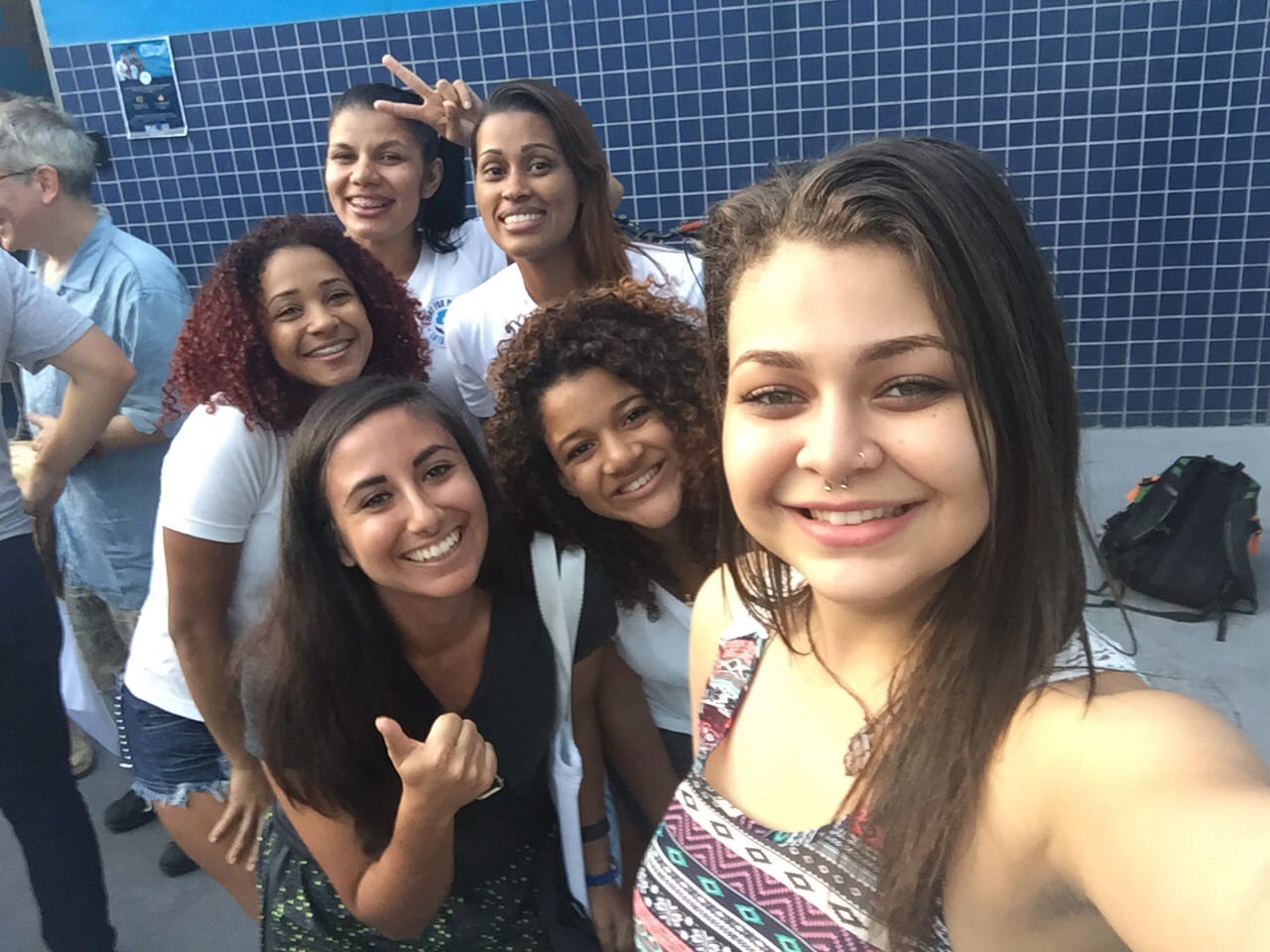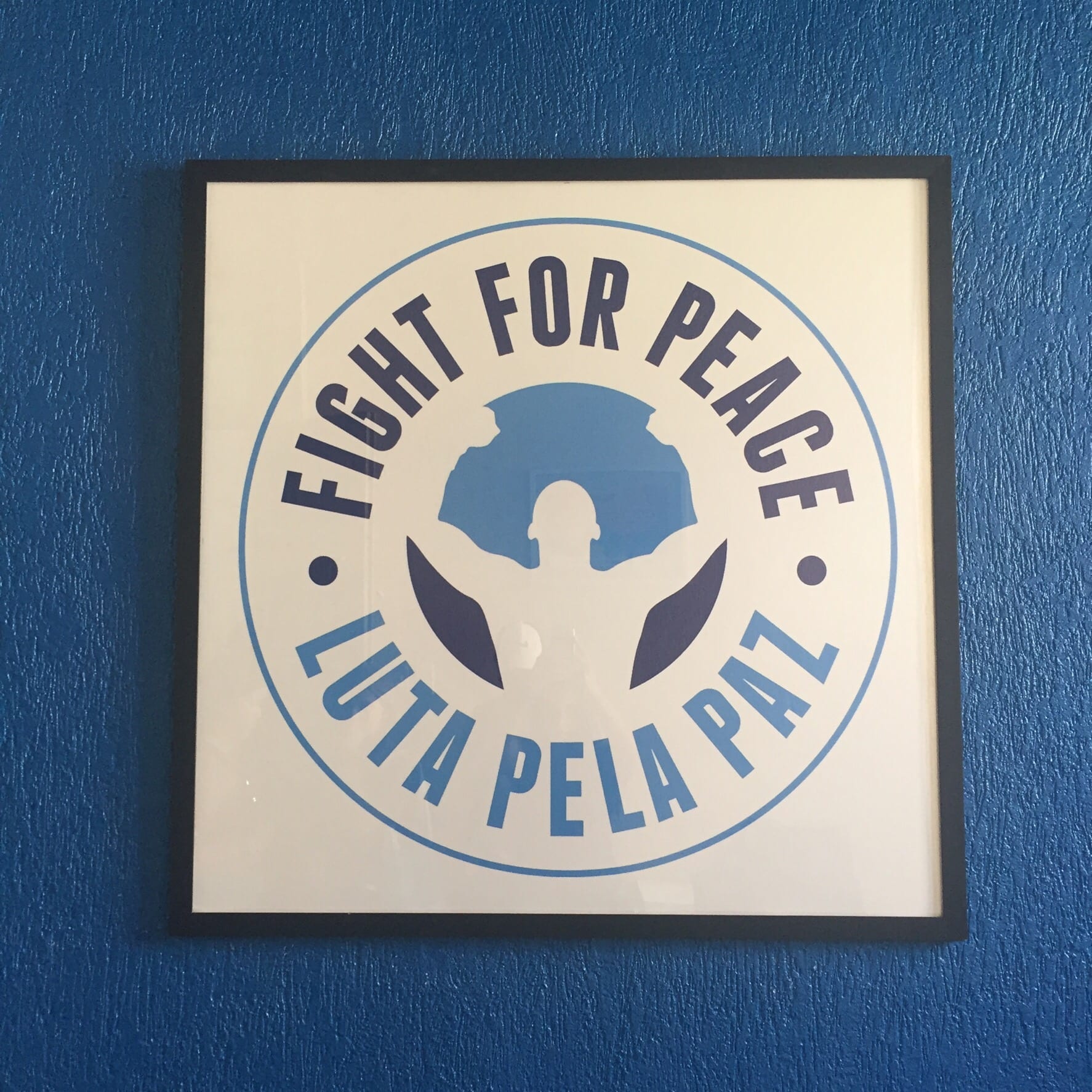
While studying abroad with the GW School of Business in Rio de Janeiro for the Olympics over the past three weeks, I had the extraordinary opportunity to attend a site visit to visit an NGO which combines sport with education and empowerment for the betterment of society.
Fight for Peace (FFP), known as Luta Pela Paz in Portuguese, is a boxing and martial arts gym in Complexo da Maré that was founded in 2000 by Luke Dowdney, a social anthropologist from England. Dowdney moved to Rio in the late 1990s to complete research on his masters thesis on street children and the drug trade, and has since built FFP into a world renowned sport for peace NGO that has been recognized by the International Olympic Committee and countless governments and foreign ministries for its life-changing work. In 2015 alone, 1,913 young people attended Fight for Peace, and 34% were girls. Last year, the organization expanded to London, and is operating a similar socially-conscious sport NGO model there as well.
Life in Complexo da Maré, a favela in Rio, is far from predictable. Violence from within the community, as well as increased raids by police and other law enforcement have fostered a cyclical environment of danger in a very densely populated community. After speaking with a panel of young people at FFP, what I thought was most striking was that while all of them are fearful for their safety and the safety of their families, they are not resolved to doing nothing with their lives, and are vocal about their aspirations. While I didn’t meet them prior to entering the program at FFP, I can imagine that the values the organization teaches using their custom “theory of change” methodology have empowered these young people to become the leaders that they are today.

The young women of the group were particularly inspiring to me. Their very presence in the room was a testament to the importance of a program like FFP in a community where their voices may be marginalized. Some were young mothers, others were finishing high school and didn’t have a concrete plan for the future prior to joining FFP. All of them talked about the importance of FFP in empowering them to become leaders in their community, and leaders at FFP. The mothers are now teaching their children the values instilled in them through the methodology learned at FFP.
In the lead up to the Olympics, the media portrayal of Rio, and in particular of the favelas, really dehumanized the people living there and reduced their stories to tragedy porn. While life is by no means easy for the participants of FFP’s Rio gym, spending time laughing, joking, and sharing our cultures was an important part of my Rio experience. It allowed me the opportunity to see their community with my own eyes, and be able to take  away a more complex understanding of their lives and the impact that FFP has had upon them, and empathize with their feelings of fear of uncertainty.
away a more complex understanding of their lives and the impact that FFP has had upon them, and empathize with their feelings of fear of uncertainty.
Sports diplomacy can be tricky–many public diplomacy scholars are skeptical of the results or impact that it can have long term. However, by visiting an organization like FFP, I realized that the true takeaway from public diplomacy or track II diplomacy with a sport component is the learning of best practices that can be applied in other communities around the world to better society. FFP has already partnered with the Jamaican government to implement their theory of change in sports programs within the country. Furthering local level initiatives is likely the best way to see positive impacts of sports diplomacy.
Being in Rio for the Olympics was in and of itself an extraordinary experience. However, being there is kind of like being at Disney World; you’re in a bubble of Olympic proportions. You eat, sleep (or not), and breathe Olympics. Everything from logistics to sport to “news” updates which generally consist of scores and which celebrities visited France House the night before. It can be incredibly difficult to contextualize the Olympics within the confines of the actual city that is playing host. Even more difficult is imagining the impact that they have on the average Carioca (the term citizens of Rio call themselves). Having the opportunity to visit Fight for Peace was by far the most important factor in shaping my opinion of the impact of the Games on the people of Rio both during the two weeks of the event, and after the torch is extinguished. Will there be further investment in peace through sport efforts? Infrastructure developments that will further connect people to major economic and social hubs throughout the city? One of the members of the youth council at FFP was very skeptical of the sustained efforts to improve the daily life of Cariocas post-Olympics. Only time will tell as far as further government involvement. However, it is all but certain that FFP will continue its efforts both in Rio and abroad to foster communities of strong young people eager to make a positive impact on the world.

